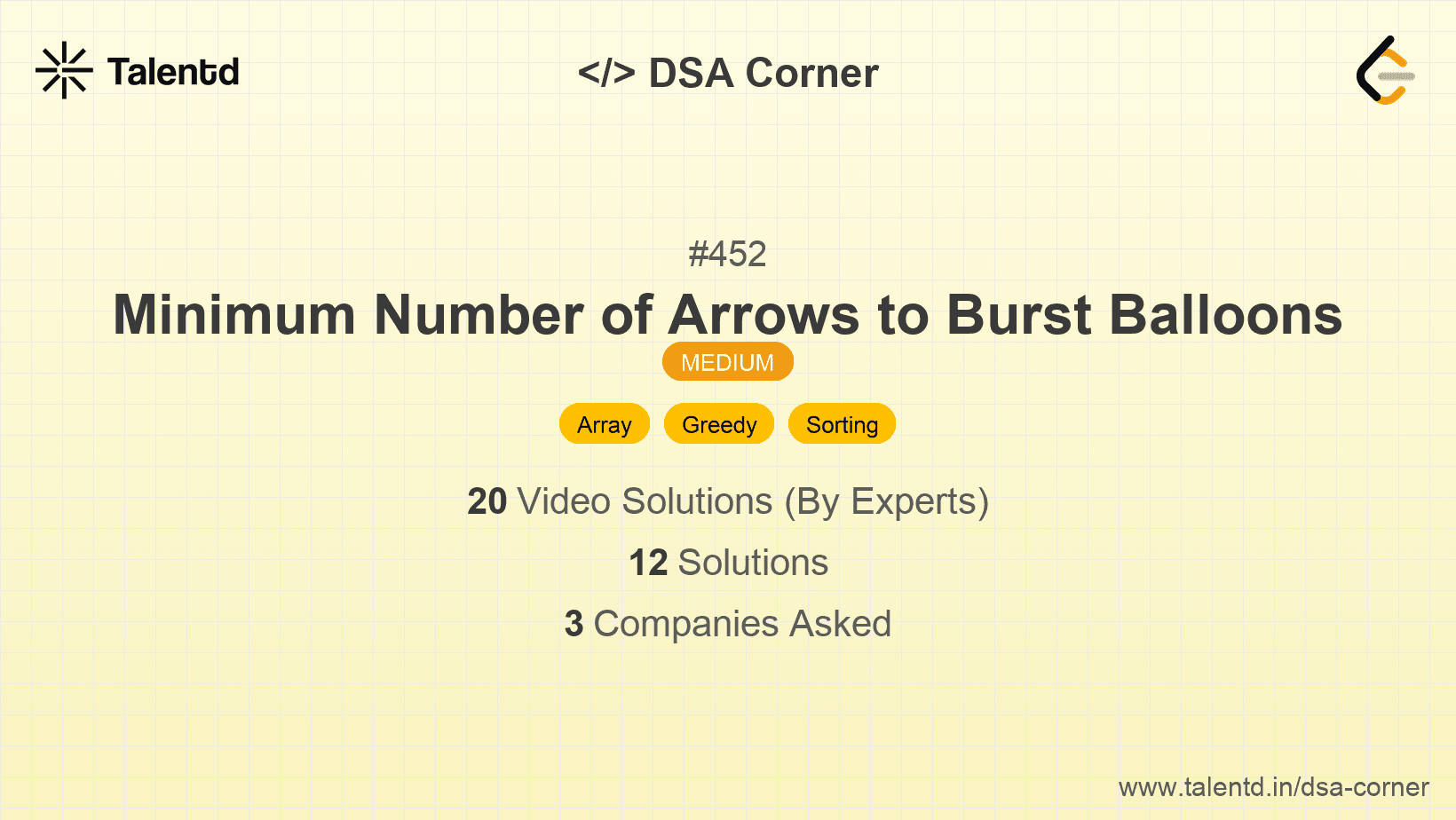
Sponsored
Sponsored
This approach involves sorting the balloons by their end points. Once sorted, we shoot an arrow at the end point of the first balloon, and then continue moving through the list, checking if subsequent balloons overlap with the burst of the arrow. If a balloon does not overlap, we need an additional arrow for it.
Time Complexity: O(n log n) due to the sorting step, where n is the number of balloons.
Space Complexity: O(1) if we ignore the space used for sorting.
1function findMinArrows(points) {
2 if (points.length === 0) return 0;
3 points.sort((a, b) => a[1] - b[1]);
4 let arrows = 1;
5 let end = points[0][1];
6 for (let [start, endVal] of points) {
7 if (start > end) {
8 arrows++;
9 end = endVal;
10 }
11 }
12 return arrows;
13}
14
15const points = [[10, 16], [2, 8], [1, 6], [7, 12]];
16console.log(findMinArrows(points));JavaScript's solution manages the problem by sorting intervals and navigating through the sorted intervals to manage overlapping efficiently.
It employs the Array.sort() utility to accurately arrange balloons by their ending x positions before counting the number of arrows required, adjusting when overlaps are not present.
This approach is adapted from the interval scheduling maximization pattern, where we attempt to find the maximum number of non-overlapping intervals. By sorting the intervals, we can focus on selecting the maximum number of compatible balloons.
Time Complexity: O(n log n) resulting from sorting operations.
Space Complexity: O(1) when sorting space considerations are minimized.
Java methods here benefit from leveraging Arrays.sort when sorting based on the starting x, allowing us to select non-overlapping maximal points.
The decision flow entrains continuing arrows for non-overlapping sections post each manageability test over existing xstart